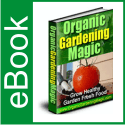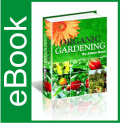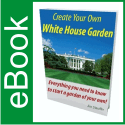Starting Your First Vegetable Garden
Starting Your First Vegetable Garden
Article by Pen Works
To start, you will need the proper tools to complete your project. For building a garden bed, you will need a digging spade and probably a digging fork (or spading fork). D-handled tools are best for this. If the cutting edge of the spade is blunt and burred, sharpen it. Also, smaller tools will be needed for the actual planting, weeding and upkeep.
Start with a garden bed. Try not to over do it and go big, smaller is always wiser when it comes to beginning any project. A good size for a beginner would be approximately 6 ft X 10 ft. If you plan to plant pumpkins, squash or zucchini, be prepared to go much bigger. These vegetables tend to need a lot of room, and often will spread out into the rest of you vegetables. Because of this, either start a bed specifically for these, or do not attempt at all if you have only a smaller garden. A raised bed can be advantageous to both you and the garden. It will allow the garden more warmth in the spring as well as keeping weeds at bay. It is best to create a framing for the bed; it will allow you to stand outside your garden without upsetting the plants and their root systems. Your garden should be able to get up to 6 hours of sunlight a day, so plan your location appropriately. If you do not have a yard big enough, container vegetable gardens are an option. Many plants including lettuce, tomatoes and peppers are just as good and hearty if planted in a large enough vessels. There should be at least 1-2 feet of soil to properly handle the root system.
Back to the garden, always fill the top 4-6 inches with a mixture of top soil and compost or fertilizer. Let it sit for 4 or 5 days before planting to ensure a healthy mixture. This will create a soil rich in nutrients for your garden.
When your garden is ready for planting, you will need to add your plant choices. As this article is for beginners, I am not going to discuss seeding methods. The following instructions are for warm season vegetables. For example: tomatoes, squashes and peppers. Keep in mind to grow only what your family will eat. Wasteful gardens tend to lead to a slacker approach to your gardens maintenance. To reap the rewards of winter planting, it is best to plant in August. However, nurseries don

 July 7, 2012
July 7, 2012 







